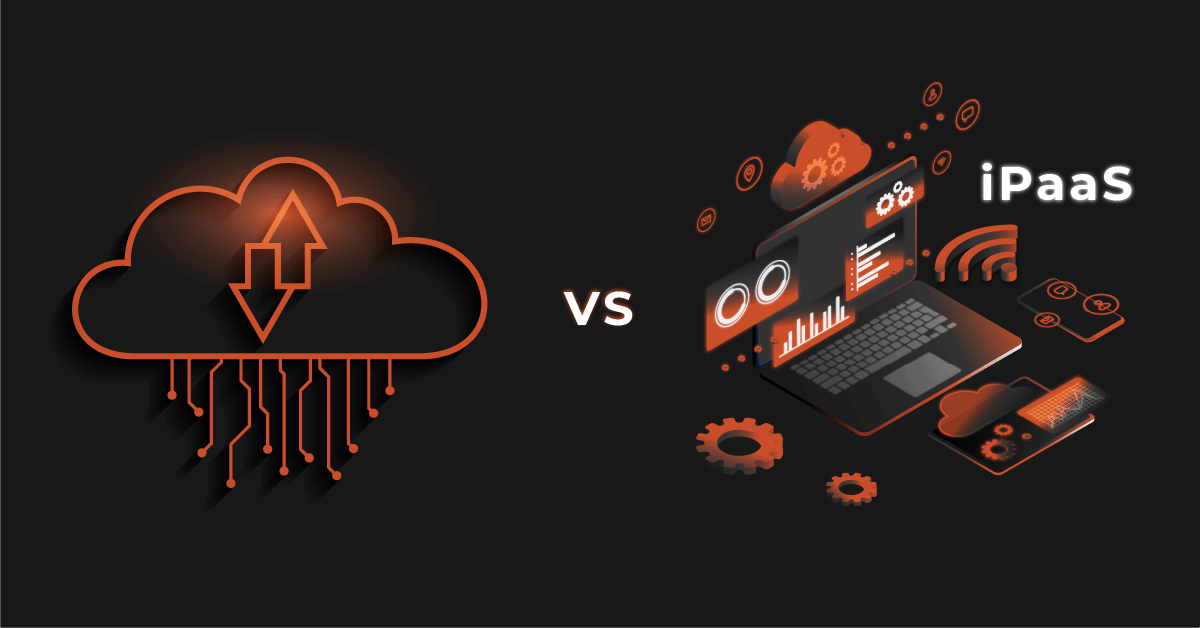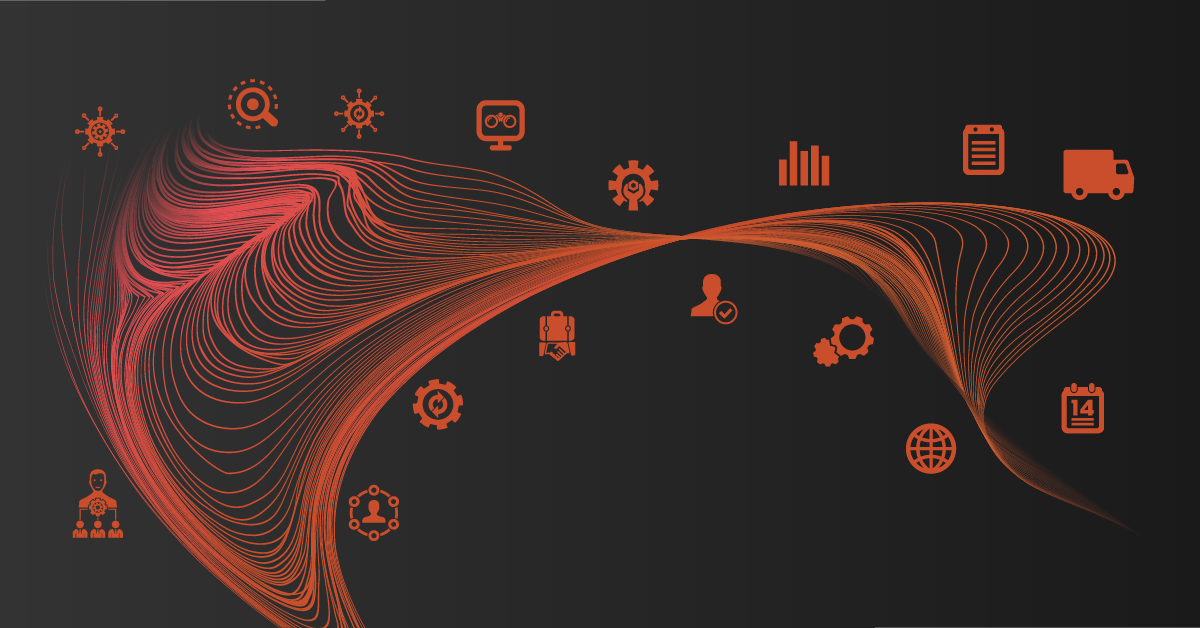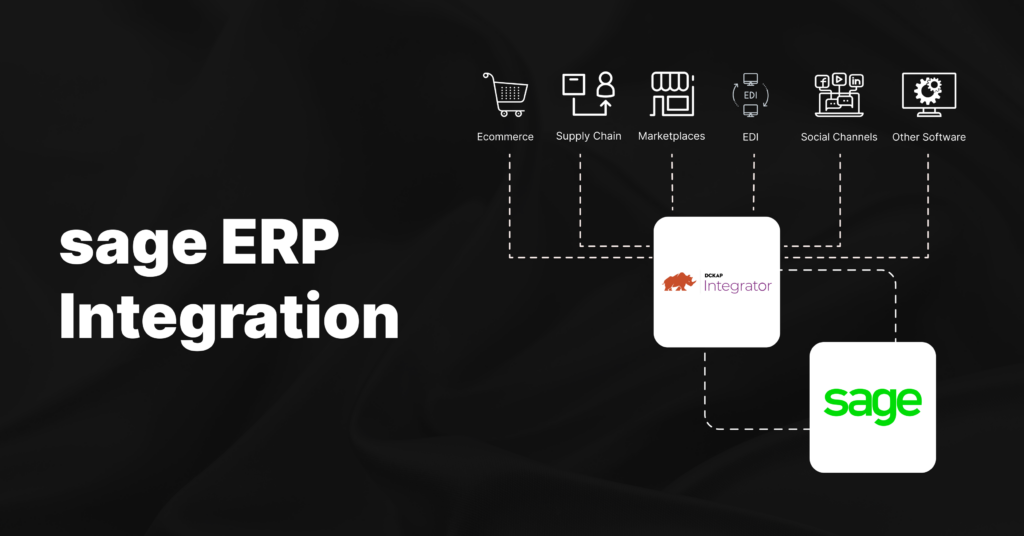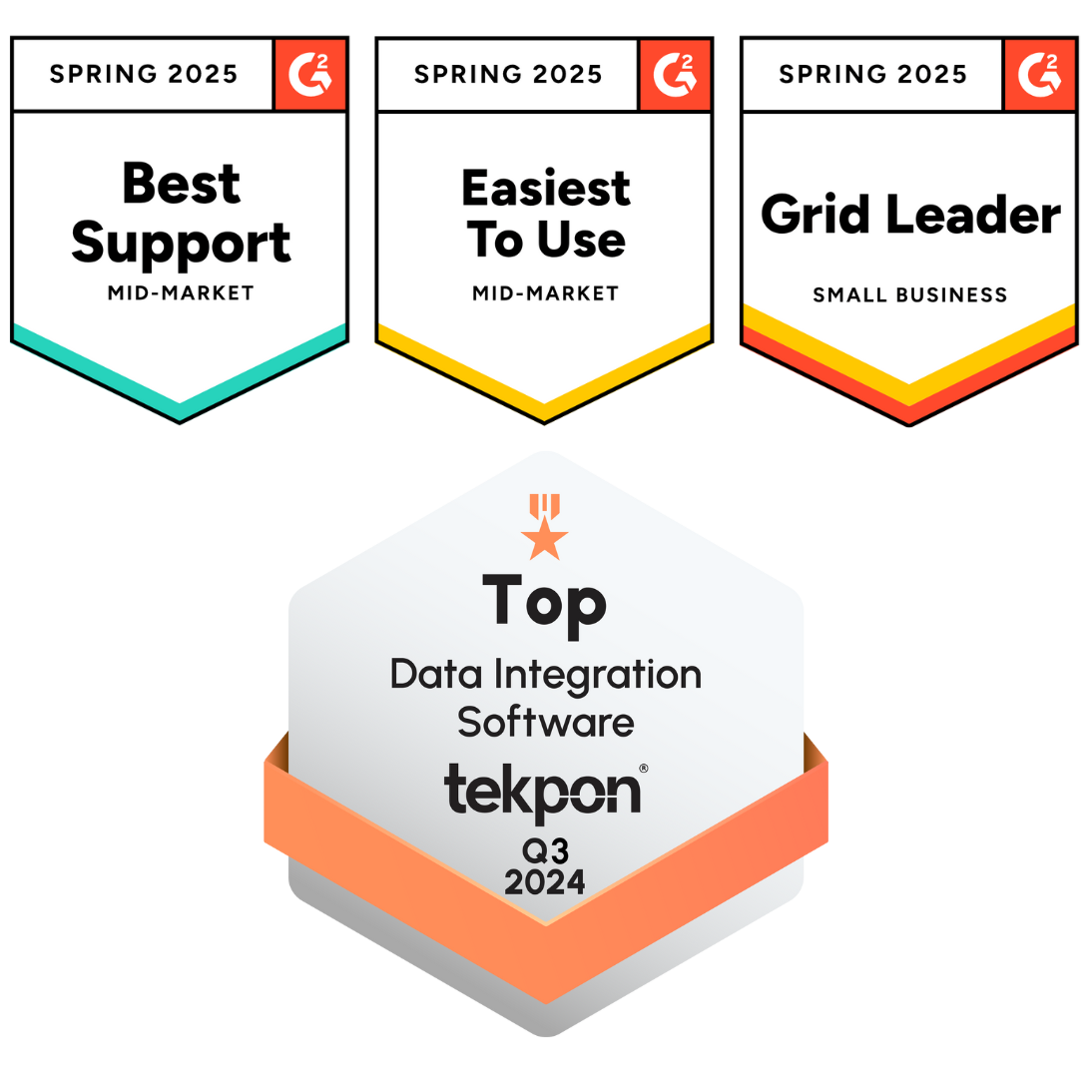Hybrid integration platforms (HIP) and Integration platform as a service (iPaaS) are terms often used interchangeably but they serve slightly different purposes. Also, with all that confusion going on, you may find it challenging to choose between them.
So, to help you make that decision, this blog compares these two widely used integration approaches: Hybrid Integration Platforms (HIP) and Integration Platform as a Service (iPaaS). We’ll break down how each one works, where they shine, where they fall short, and how to decide which one aligns best with your business needs.
HIP vs. iPaaS: Understanding the Key Differences
1. What Are HIP and iPaaS?
Hybrid Integration Platform (HIP):
A Hybrid Integration Platform (HIP) is a solution to connect applications, data, and workflows over multiple systems across on-premises (physical) and cloud-based (digital) environments. It can be deployed as a true multi-tenant cloud solution, a private cloud, or an on-premises data solution.
A HIP framework is designed to support a diverse array of data integration patterns, enabling businesses to connect legacy on-premises infrastructure with innovative cloud-based products. By bridging this divide, HIPs help address the evolving big data needs and business processes driven by digital transformation.
Integration Platform as a Service (iPaaS):
Integration Platform-as-a-Service (iPaaS) refers to a solution to connect various applications, data, and systems in a cloud-based, digital environment. An iPaaS provides a means to monitor and manage real-time data sharing and synchronization as well as generate custom workflows for improved operations and more efficient business processes.
Though an iPaaS can scrape data from an on-premises solution, it is not hybrid adaptable. It’s deployed across public (multi-tenant) and private clouds to provide a unified view of insights; likewise, it can help scrub incomplete or inaccurate entries from a database.
2. How They Work
HIP Architecture:
The architecture of a Hybrid Integration Platform allows data to reside in the cloud or within a business’s private infrastructure. It is designed to handle diverse and complex data sources, whether they’re IoT devices, legacy systems, or cloud-based services.
Hybrid integration begins with an ingestion process, including data cleansing, transforming, mapping, and warehousing insights. An integration governance feature ensures HIP integrations adhere to existing architecture.
HIPs leverage integration management tools to detect and correct incomplete or inaccurate data retrieved from the cloud. They also offer tools to build, publish, and maintain custom APIs—such as linking Slack with Trello, alongside business automation capabilities.
iPaaS Architecture:
Unlike SaaS, which is delivered over the internet, an iPaaS is a cloud-based integration solution. It is a low-code, API-driven method to create and manage connections between SaaS systems and cloud apps.
An iPaaS includes pre-built connectors for platforms like ecommerce, ERPs, and marketplace automation tools. Like HIPs, it supports integration governance and API creation but is built entirely for cloud operations.
With scalable architecture, iPaaS platforms adapt to workload fluctuations and help automate repetitive tasks to reduce manual input.
3. Benefits at a Glance
Benefits of HIP:
- Integrates all data sources across on-prem and cloud environments
- Eliminates the need for multiple platforms
- Enhances collaboration and simplifies informed decision-making
- Reduces integration project timelines with fast deployment
- Provides automation features and easy API building
Benefits of iPaaS:
- Offers pre-built connectors for fast integration
- Requires no infrastructure investment
- Built-in security with integration governance
- User-friendly, low-code interface for cross-functional teams
- Scales with business needs and automates workflows
4. Common Challenges
Challenges of Hybrid Integration Platforms
- Complexities in integrating legacy and modern systems
- Requires expertise in distributed files and OS
- Needs strong cross-platform management tools
- On-prem systems may struggle to keep pace with cloud scalability
Challenges of iPaaS
- Limited to internet and cloud-based sources
- Lacks support for physical/on-premises data transformation
- May require an additional tool for full transformation
- Can take longer to process even small data loads
- Delays in insight generation can impact decision-making
5. Use Cases & Examples
Successful Use of a Hybrid Integration Platform
Best suited for companies using both cloud and on-prem systems within the same journey.
Example: An ecommerce fashion retailer uses on-prem software for inventory and cloud-based tools for consumer behavior.
If a customer adds an item to their cart, cloud systems log this, while the on-prem inventory flags low stock. A HIP can trigger a personalized SMS or email based on both data sets.
Successful Use of an iPaaS
Ideal for cloud-first businesses like SaaS providers or B2B platforms.
Example: A cloud-based accounting SaaS provider uses separate cloud systems for sales, marketing, and support.
If a service ticket is raised, iPaaS pulls that entry along with customer history and subscription data, helping the team respond with context and speed.
| Hybrid Integration Platform (HIP) | Integration Platform-as-a-Service (iPaaS) | |
| Deployment | Can be deployed from both on-premises and cloud environments or even custom integration systems, | Fully deployed in the cloud. |
| Focus | Bridge the divide between antiquated legacy systems and modern cloud-based systems to enhance on-premises operations, | iPaaS solutions are geared toward digital growth, like B2B SaaS. |
| Flexibility | Rely on long-term integration strategies and connect with existing architecture to maintain data integrity, | Enable organizations to replace or revise APIs without a loss of data integrity. |
| Expertise | Often require a higher level of expertise (both for IT departments and the subsequent user base within a company), | Require far less advanced knowledge to deploy and maintain. |
Things to Consider: HIP vs. iPaaS
When deciding between Hybrid Integration Platforms (HIPs) and integration Platform as a Service (iPaaS), it’s important to understand how each aligns with your business goals, infrastructure, and long-term flexibility.
Here’s a breakdown of key points to consider before making a choice:
Cost and Resource Efficiency
- HIPs reduce costs by enabling full data integration across systems, eliminating the need for multiple tools, and minimizing manual entry through automation.
- iPaaS helps cut hosting and security costs by managing all connections in a single secure cloud space, which is ideal for teams looking to streamline infrastructure.
Scalability and Architecture
- HIPs are designed with multi-cloud support in mind, even if deployed on-premise. This allows you to scale with multiple vendors and a range of data sources.
- iPaaS offers the flexibility to trial APIs and test new cloud applications easily, helping businesses stay agile and respond quickly to evolving needs.
Integration Complexity and Capability
- HIPs can handle a wide variety of integration patterns from basic file transfers to advanced data transformations across both cloud and on-prem systems.
- iPaaS comes with pre-built connectors for cloud-based and SaaS applications, simplifying integration efforts but may lack tools for more complex scenarios or on-premise data syncing.
Ease of Use
- HIPs often require deep technical knowledge to manage integrations, especially when dealing with legacy systems and modernizing architecture.
- iPaaS is built for accessibility, featuring drag-and-drop tools and user-friendly web interfaces that require minimal programming skills.
Experimentation and Innovation
- HIPs may present challenges when experimenting with new applications or replacing connected systems due to limitations in data synchronization across hybrid environments.
- iPaaS supports rapid experimentation by allowing businesses to trial cloud apps without risking data integrity, ideal for fast-moving, innovative teams.
Compatibility with Legacy Systems
- HIPs are better suited for integrating legacy infrastructure alongside cloud-based systems, making them a stronger fit for businesses still dependent on older technologies.
- iPaaS may face compatibility issues with legacy systems, sometimes requiring custom APIs, and cannot provide real-time syncing with on-prem systems.
Data Transformation and Error Handling
- HIPs are equipped to handle complex data workflows with advanced transformation tools and support for diverse integration styles.
- iPaaS may lack certain features like in-memory storage or simplified error handling, limiting its ability to manage more robust enterprise-level needs.
Also read: What Is iPaaS? Examples, Benefits and Use Cases (+Top Tool for Distributors)
How to Choose Between Hybrid Integration Platform and iPaaS
There are so many overlaps between Hybrid Integration Platforms and integration Platforms as a Service that it can be challenging to choose just one. To decide which is best for your business, determine your business requirements, assess your data architecture, and gauge your budget.
Understand Your Business Requirements
A HIP solution will support both on-premises and cloud-based deployment, while an iPaaS is entirely cloud-based. Does your business value continuous storage on-premises systems, or would you prefer to shift entirely to the cloud? A HIP solution will favor those looking to privately secure their data in-house, while an iPaaS will suit those seeking an entire digital transformation.
Assess Technical and Support Aspects
A HIP solution might be ideal for older enterprises that wish to maintain the technical and support aspects of their current legacy systems while still reaping the benefits of cloud-based storage. For newer organizations, as well as those who already operate fully in the cloud, iPaaS may be best. The determining factor may be your comfortability with a learning curve (HIP) vs simplicity (iPaaS).
API Management
In the context of a HIP, API management often leans towards a more flexible approach, accommodating both legacy systems and newer cloud-based applications. This means that businesses can manage APIs that are hosted on-premises and in the cloud in a cohesive integration strategy.
On the other hand, iPaaS, being inherently cloud-centric, offers a more streamlined, fast, and agile approach to API management. Businesses can rapidly deploy, monitor, and scale APIs in a cloud environment. However, it might not offer the same depth of control over APIs as a HIP, especially when dealing with intricate on-premises systems.
Application Integration
With HIP, application integration is often viewed through a broader lens, encompassing both traditional on-premises systems and contemporary cloud-based solutions. This hybrid approach ensures that businesses can create seamless connections between legacy applications and newer, cloud-native ones. The strength of HIP lies in its ability to bridge the gap between different generations of IT infrastructure, providing a unified integration layer.
Conversely, iPaaS offers a more dynamic and elastic approach to application integration. They excel at connecting various cloud-based applications, offering rapid integration capabilities, pre-built connectors, and a user-friendly interface. This makes iPaaS an attractive option for businesses that are predominantly operating in the cloud. However, when it comes to deeply entrenched on-premises systems, you might face challenges with an iPaaS platform.
Cloud Integration
For those straddling the line between on-premises and cloud, HIP offers a versatile integration platform. Meanwhile, businesses that are deeply entrenched in the cloud landscape will likely find iPaaS to be a more natural and robust fit for their integration needs.
That’s because HIP offers a balanced approach to cloud integration. While it’s adept at handling on-premises systems, it also provides tools and features tailored for integrating cloud services, so on-site systems communicate effectively. For organizations that are in the transitional phase, moving from traditional IT setups to cloud-centric models — HIP offers the flexibility to integrate at their own pace.
On the other hand, iPaaS is inherently designed to facilitate seamless connections between various cloud services. It offers a plethora of connectors for popular cloud platforms, ensuring that businesses can quickly and efficiently integrate diverse cloud solutions. Furthermore, iPaaS is more scalable out of the box. Its cloud-native architecture means that iPaaS is inherently equipped to handle the nuances and dynamism of cloud ecosystems making it a safe choice for businesses that are fully committed to a cloud-first strategy.
Enterprise Integration
HIP is often seen as a robust solution for integrating with enterprise software. Its strength lies in its ability to connect with both legacy enterprise systems and newer cloud-based platforms. For instance, a business using a traditional ERP system alongside a modern cloud-based CRM would find HIP advantageous. The platform ensures that data and processes flow seamlessly between these systems.
On the flip side, iPaaS offers a more agile approach to enterprise software integration. It’s especially powerful when integrating modern, cloud-based enterprise solutions. With a ton of pre-built connectors and templates, iPaaS can rapidly connect various enterprise platforms ensuring real-time data synchronization and process automation. However, this option might be problematic when trying to integrate with legacy enterprise software or you’re looking to create custom workflows for homegrown solutions.
Cost Analysis:
A HIP solution is typically a one-and-done investment, meaning one platform can check every box for required data integration capabilities. On the other hand, an iPaaS solution may require separate platforms to scrape and cleanse data from on-premises systems, creating an additional expense. However, an iPaaS may not require custom API integrations, which can reduce the total investment.
Which is Better for Your Business?
Go for a HIP if you require a true multi-tenant cloud solution that can double as an on-premises data integration and storage platform for legacy stems.
If your target market is mid-market, or enterprise, the comprehensive nature of a HIP, like DCKAP Integrator, may be best for you.
Hybrid Through The Cloud: Best Of Both Worlds
Choosing between a Hybrid Integration Platform (HIP) and an iPaaS solution can be tough. Both have their own sets of benefits and limitations. You may find that you need some capabilities of HIPs but prefer the cloud-based simplicity of iPaaS, or vice versa. What if we told you there’s a solution that offers the best of both worlds? A tool that combines the strengths of hybrid integration and iPaaS in one seamless platform?
The tool is DCKAP Integrator, the all-in-one ERP integration solution for manufacturers and distributors. While it’s known as the go-to integration tool for ERP systems, DCKAP Integrator does so much more. It can integrate all the systems your business relies on, including ecommerce platforms, CRMs, EDI, PIM, warehouse management software, inventory management systems, and anything else in your tech stack.
Here’s Why DCKAP Integrator Stands Out:
- Hybrid Cloud Capabilities: Whether you’re managing on-premise legacy systems or cloud-based applications, DCKAP Integrator seamlessly connects them all. This gives you the flexibility of a hybrid solution with the simplicity of a cloud platform.
- Limitless Integrations: Integrate any software application your business uses, no matter how complex. DCKAP Integrator provides limitless integration possibilities, ensuring that all your systems communicate flawlessly.
- Advanced Mapping and Modifiers: Customize data transformations with advanced mapping tools that adapt to your unique workflows. It allows you to make precise adjustments and ensure data flows exactly as needed.
- Secure Data Flow: Your business data is protected with the highest security standards, ensuring that your sensitive information moves securely across systems.
- Transparent Pricing: No hidden fees, no surprises. With DCKAP Integrator, you get a clear, upfront view of costs, so you can make informed decisions.
- Comprehensive Logging: Keep track of every integration with advanced logging features. Monitor performance, troubleshoot quickly, and gain full visibility into your processes.
With the best features of both HIP and iPaaS solutions, it’s designed to scale with your business needs, whether you’re a manufacturer, distributor, or enterprise-level organization.
Interested in learning more? Schedule a demo with our integration specialists and see how DCKAP Integrator can streamline your operations and simplify your integrations.
FAQs
What are some top iPaaS vendors?
The iPaaS market is growing, project to hit a revenue forecast of $13.9 billion in 2026. Oracle Cloud Integration Suite, Cleo Integration Cloud , MuleSoft, Jitterbit, IBM App Connect and DCKAP Integrator are some examples of iPaaS providers that help businesses connect business-critical applications such as their ERP, ecommerce platform, CRM, PIM and more.
Who can benefit from using an iPaaS product?
Small businesses can definitely enjoy the many perks that come with the right integration tool. However, for large organizations, enterprise iPaaS can help significantly when it comes to integrating multiple enterprise-level applications and gain real-time insights into the business.
What is the difference between iPaaS vs ETL vs ESB?
iPaaS (Integration Platform as a Service) is a cloud-based solution for connecting applications and data sources. ETL (Extract, Transform, Load) is a data integration process that focuses on extracting data from various sources, transforming it, and loading it into a data warehouse. ESB (Enterprise Service Bus) is a middleware technology for facilitating communication between different applications. iPaaS is broader, ETL is data-centric, and ESB is focused on application-level integration. Each serves distinct integration needs.
What is the difference between iPaaS and CPaaS?
iPaaS (Integration Platform as a Service) connects applications and data sources for seamless data exchange. CPaaS (Communication Platform as a Service) focuses on integrating real-time communication tools like messaging and voice services into applications. While iPaaS manages data flow, CPaaS enhances communication capabilities, often used for customer engagement and collaboration within applications.





